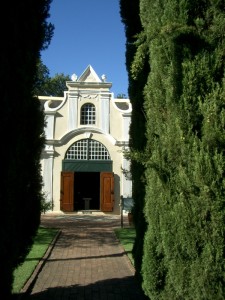 With its 350 years of winemaking history, South Africa should qualify as an “old” wine region. However, after years of decline and isolation during apartheid, the country is relatively new to the modern wine world having only been on the world stage for two decades.
With its 350 years of winemaking history, South Africa should qualify as an “old” wine region. However, after years of decline and isolation during apartheid, the country is relatively new to the modern wine world having only been on the world stage for two decades.
Initially set up as a way-station for Dutch East India ships bound for Asia in search of spices and other exotic goods, the Cape Colony was established in 1652, with vineyards planted in Cape Town as early as 1655. By the mid-1700s, South Africa’s wines, particularly the famed Constantia, were the toast of Europe fetching high prices at auction and sought after by emperors and kings. But, the triple threat of oidium (vine disease), phylloxera (vine louse) and the Suez canal decimated the industry. While the KWV, established in 1918, helped to stabilize grape prices, the emphasis was on quantity, not quality. Moreover, despite the development of its Wine of Origin scheme, which shifted attention toward integrity in 1973, the boycott of South African products during the period of apartheid severely limited the market for their wines.
Then, beginning in 1990 with the release of Nelson Mandela, the repeal of apartheid lifted the ban and South African wine producers found themselves in the world market once again. Beyond providing new places to sell their wines, exposure to other wine regions presented the opportunity to learn new winemaking techniques, which they readily did. Today, South African wines garner international acclaim, taking home gold medals in competitions and even landing on Wine Spectator’s Top 100 Wines List.
South Africa’s emblematic grapes are Chenin Blanc and Pinotage. The former has lived a bit of a Cinderella story, beginning life as a workhorse grape and then becoming recognized for the high quality it can produce when treated properly. Ken Forrester has been a champion of the grape and produces four different Chenin Blanc wines. Pinotage is uniquely South African having been developed there in 1925 as the offspring of Pinot Noir and Cinsaut (then called Hermitage). This grape has a notorious reputation, with most winemakers stating a distinct love or hate for it. Depending upon with whom you speak, it is either capable of great depth and concentration when planted in the right places (Anthony Hamilton Russell of Hamilton Russell Vineyards) or should be dismissed altogether (Gyles Webb of Thelema).
Moving outside the established wine regions of Constantia, Stellenbosch and Paarl, winemakers are searching out new areas for planting vines. Charles Back of Fairview is the revolutionary credited with the colonization of Swartland. This rugged region located only one hour north of Cape Town offers up a diversity of soils, but regardless of the type, all of them permit dry farming (non-irrigated). Further, several older vineyards of Chenin Blanc and Pinotage have shown great potential here, as have warm climate grapes such as Spain’s Tempranillo and France’s Grenache and Mourvèdre.
Winemakers looking for cooler climates have traveled south to the coast. Hamilton Russell’s father, Tim, gravitated to the clay-rich soils of Hemel-en-Aarde near Walker Bay for Pinot Noir and Chardonnay. Similarly, Gyles Webb found Elgin, previously known for its apple orchards, to be a suitable area for Sauvignon Blanc, Chardonnay (and his pocket-book due its lower real estate prices).
Among other new initiatives, South Africa has been on the forefront of land preservation and biodiversity promotion. To that end, it instituted a new seal with the 2010 vintage that merges its Integrity with its Sustainability programs. Additionally, South Africa has more fair trade wines than any other country.
As abandoned estates are purchased, vineyards renewed and cellars rebuilt, South Africa is poised for continued success as it re-establishes its reputation as a fine wine producer. And, with Klein Constantia’s Vin de Constance – a re-introduction of the famed Constantia wines, truly everything old is new again.
TASTING NOTES
Sutherland, Sauvignon Blanc 2008, Elgin, South Africa, $15.00
From an up-and-coming cool climate region and Gyles Webb’s new label, this wine is dry, with bright grapefruit, slight grass and a hint of minerality. Lacking the pungency of a New Zealand Sauvignon Blanc, it is more fruit focused with racy acidity.
Ken Forrester Chenin Blanc 2010, Stellenbosch, South Africa, $14.00
The Reserve range of Ken’s three tiers of Chenin Blanc, this wine is produced from hand-harvested fruit picked from 37 year-old vines. Baked apple, honey and citrus aromas persist on the rich, round palate and throughout the wine’s long length.
Russell Hamilton Vineyards, Pinot Noir 2007, Hemel-en-Aarde, South Africa, $40.00
Acknowledged as the pioneer of South Africa’s Pinot Noir, Russell Hamilton is producing worldclass wines as evidenced by this wine’s appearance on Wine Spectator’s list of the top 100 wines for 2009. The nose greets with savory, dried herb notes, which give way to earth and herbal flavors on the complex palate, culminating in long length.
Nederberg, Ingenuity Red 2008, Western Cape, South Africa, $NA
Produced from a blend of Sangiovese, Barbera and Nebbiolo, Nederberg planted these Italian red varieties to see how they would do and then aged the wine in older Romanian oak. The result is a wine with aromas and flavors of spice, wood and berry/cherry. Medium tannins provide some structure, but don’t overwhelm the palate.
Xavier Flouret, uQamata 2007, Polkadraai Hills, South Africa, $20.00
A collaboration between Xavier Flouret and Amani winery, which boasts the first female black winemaker in South Africa, this Bordeaux-style blend includes Cabernet Franc, Merlot, Malbec, Petit Verdot and Cabernet Savignon. Aromas of berries, smoke and spice dominate the nose while the palate shows blackberry, slight herbaceousness and spices that linger throughout the long length.
